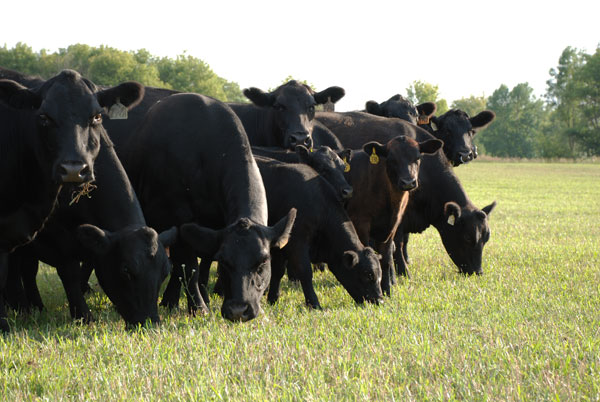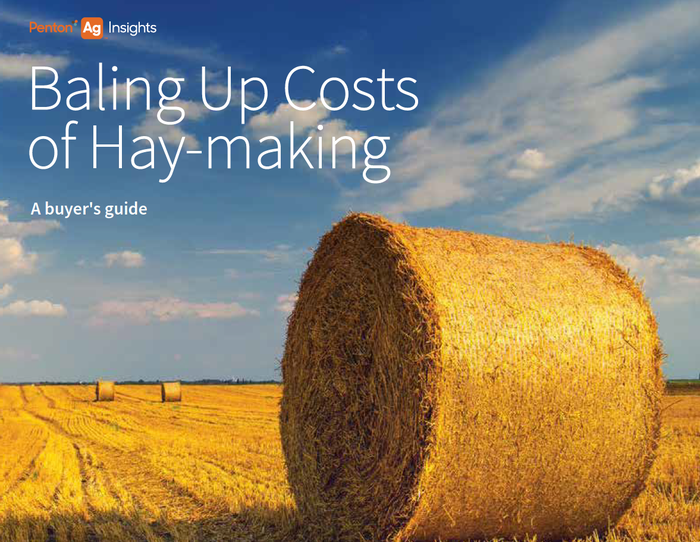7 takeaways from our tour of industry leaders in grazing
One of the best parts about being a life-long learner is taking advantage of the knowledge and wisdom of others.
May 2, 2017

In this column, I have advised that part of being a life-long learner is finding and visiting people who are doing something well--especially if you might want to do it. Recently I took some consulting clients on a “grazing tour.” It is a fantastic way to learn and see if something you have heard about actually works and how you might proceed with minimal mistakes. It is always encouraging to see an idea really work. Plus, it is also good to see how ideas are implemented and how you can avoid start-up mistakes.
Our first stop was at Steve and Judy Freeman’s near Hartville, Mo. Leaves were not yet on the trees, but their grass was thick and tall—very tall, even luxurious, compared to others in the vicinity. I had heard for years that other grasses won’t grow with fescue. In addition to several legumes, they also have a good variety of grasses and forbs growing along with the fescue.
Their South Poll cows were just starting to calve and were in excellent condition after having been fed very little hay through the winter. The hay was fed as a supplement to stretch the winter grazing stockpile into spring, and no other supplement was fed.
Next stop was at Gordon Hazard’s, a very well-known stocker operator near West Point, Miss. He’s a great example that stocker cattle can be managed with almost no equipment and very simple, well designed corrals. He believes in training the cattle for easy handling, pasture rotation and bringing cattle to the corrals for quick and low-stress shipping with very little shrink. He says that, as much as possible, he wants to own things that appreciate and not own things that depreciate. We received a lot of great ideas for profitably managing stocker cattle.
We then visited with Allen Williams who gave us a wonderful lesson on grazing and soils. He emphasized complexity and diversity of plants, soil microbes, insects, birds, etc., along with daily moves of the livestock to get desired impacts on the soil surface, trampling of ungrazed plant material and grazing uniformity. The combination is what moves a soil to improved water infiltration, greater moisture holding capacity, increased organic matter, healthy and more nutritious plants.
Williams used charts, graphs, photos and lots of personal experience to help us understand that what we do on the soil surface has a tremendous effect on what happens below the surface. Which, in turn, has a great effect on the plants, livestock, insects, birds, wildlife, etc., and eventually humans. It all starts with the soil and our management of it.
Next was a visit with Cooper and Katie Hurst near Woodville, Miss., which is south of the fescue belt. With no stockpiled fescue available for winter grazing, the Hursts now have about five years of experience planting a very diverse mixture of cool season annuals—legumes, grasses (grains) and a few forbs—to provide higher quality and quantity of winter grazing.
This planting is all fall season, no-till into warm season grasses. It has proven to be quite successful for providing winter and spring grazing, and we saw beautiful pastures of mixed annuals.
Now they are seeing an improvement in the productivity of the warm season grasses in the summer, probably as a result of the added complexity and diversity introduced each fall and the effects of living, active roots and soil microbes all through the winter. They have gone from high rates of commercial fertilizer to none, have almost eliminated hay feeding and have maintained or increased stocking rate.
We finished our trip at the Emry Birdwell and Deborah Clark ranch near Henrietta, Texas. They are passionate about soil health and diversity of plants and creatures. It’s hard to believe that they run 4,000 to 6,000 head of stocker steers in one herd—moving them to fresh pasture at least once per day, but usually three to six times per day.
This is done with temporary electric fence which is put in and removed quickly and easily. The variety of grasses along with the productivity is amazing. From pictures taken in previous years, it was evident that bare ground was being reduced significantly—to the point of almost having none.

The large herd has enabled them to run a lot of cattle with little labor and equipment. Multiple daily moves not only provide a lot of animal effect—trampling, manure, urine—but also frequent fresh feed to encourage high levels of intake to produce higher weight gain.
A few observations and points of instruction:
None of these people are using commercial fertilizers at this time.
Labor requirements are reduced, not increased as is commonly expected. This is the most common misconception that I hear. Yet the best graziers I know all say that, once the infrastructure is in place, the labor requirement is less than when they were grazing conventionally.
For interior fences, they all use only electric fence. However, all warned against building too much permanent electric fence. They like the flexibility provided by temporary fencing in paddock sizing and location. Permanent or semi-permanent high tensile wire electric fences are often used along tree lines or to make long and narrow paddocks, which can then be divided easily with temporary electric fences. The permanent fences also provide a source of electricity for the temporary fences.
Time controlled, adaptive grazing has tremendous potential for improvement of the soil and pasture land productivity. You may double or more than double your carrying capacity. You may eliminate commercial fertilizer and eliminate or greatly reduce hay and supplement feeding.
Fescue doesn’t have to be a mono-culture. With good management, legumes, forbs and other grasses will grow along with the fescue.
Daily moves followed by lengthy recovery or rest periods are the norm for this group of people and are desirable for good stock density and its attendant benefits. However, you can take a break when personal goals or obligations require. You simply make a bigger paddock and leave the animals longer—several days if needed.
My advice to beginning graziers is to get some training and visit a few successful graziers in climates and pasture lands as similar to yours as you can find.
About the Author(s)
You May Also Like



